Cardano
$0.37760900
0.37760000
$13,833,914,904
Total Market Cap
45,000,000,000 ADA
Circulating Supply
$626,404,967
24h Volume
$13,833,914,904
Total Market Cap
45,000,000,000 ADA
Circulating Supply
$626,404,967
24h Volume
$13,833,914,904
Total Market Cap
45,000,000,000 ADA
Circulating Supply
$626,404,967
24h Volume
$13,833,914,904
Total Market Cap
45,000,000,000 ADA
Circulating Supply
$626,404,967
24h Volume
| # | Signal | Exchange | Type | Age |
|---|


| Logo | Exchange | Price | Pair | Spread | 24h Volume |
|---|---|---|---|---|---|
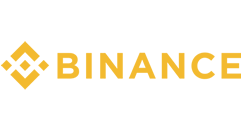 |
Binance | $0.3776 | ADAUSDC | $0.00 | $10,848,903 |
 |
Binance.us | $0.3773 | ADAUSD | $0.00 | $39,741 |
 |
BingX | $0.3778 | ADA/USDC | $0.00 | $1,010,064 |
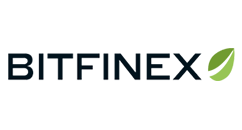 |
Bitfinex | $0.37745 | ADA/USD | $0.00 | $210,690 |
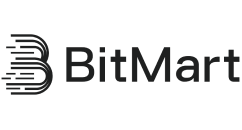 |
BitMart | $0.377513 | ADA/USDC | $0.00 | $188,865 |
 |
Bitvavo | $0.37791 | ADA/USDC | $0.00 | $81,364 |
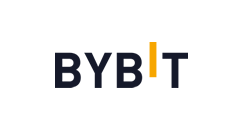 |
Bybit | $0.3776 | ADA/USDC | $0.00 | $2,988,538 |
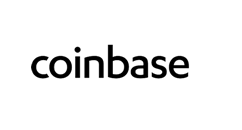 |
Coinbase Advanced | $0.3777 | ADA-USD | $0.00 | $16,195,924 |
 |
Crypto.com | $0.37765 | ADA/USD | $0.00 | $2,060,801 |
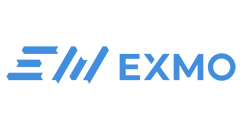 |
EXMO | $0.40449927 | ADA/USD | $0.05 | $596,148 |
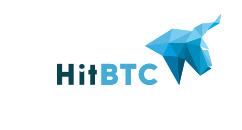 |
HitBTC | $0.36025 | ADA/USDC | $0.00 | $0 |
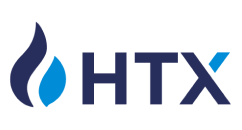 |
HTX | $0.377024 | ADA/USDT | $0.00 | $1,389,948 |
 |
Kraken | $0.377523 | ADA/USD | $0.00 | $5,285,768 |
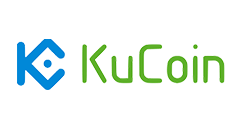 |
KuCoin | $0.3773 | ADA/USDC | $0.00 | $708,395 |
 |
OKX | $0.3769 | ADA/USD | $0.00 | $605,020 |
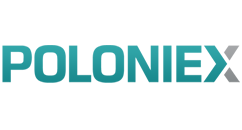 |
Poloniex | $0.37784 | USDT_ADA | $0.00 | $13,610,948 |
Cardano (ADA) is a third-generation blockchain platform that aims to provide a more secure, scalable, and sustainable infrastructure for the development of decentralized applications and smart contracts. Named after the 16th-century Italian mathematician Gerolamo Cardano, the platform was launched in 2017 by Ethereum co-founder Charles Hoskinson. The native cryptocurrency of the Cardano network is called ADA, named after the 19th-century mathematician Ada Lovelace, who is often recognized as the world's first computer programmer.
Unlike many other cryptocurrencies, Cardano was built on peer-reviewed research and developed through evidence-based methods. This scientific approach sets Cardano (ADA) apart in the cryptocurrency space, emphasizing rigorous testing and verification before implementation.
Cardano operates on a unique two-layer architecture:
The first layer, called the Cardano Settlement Layer (CSL), is used for settling transactions with the ADA cryptocurrency. This layer acts as the balance ledger and records all movement of the ADA token.
The second layer, the Cardano Computation Layer (CCL), supports smart contracts and decentralized applications. This separation allows for greater flexibility and security, as changes can be made to one layer without affecting the other.
Cardano implements a unique consensus mechanism called Ouroboros, which is a proof-of-stake (PoS) protocol. Ouroboros was the first provably secure PoS protocol and was developed through peer-reviewed research. This protocol allows ADA holders to delegate their coins to staking pools or create their own pools, contributing to network security while earning rewards.
Cardano (ADA) uses a proof-of-stake consensus mechanism, which means it doesn't support traditional mining as seen in proof-of-work cryptocurrencies like Bitcoin.
Staking is a fundamental aspect of the Cardano ecosystem. ADA holders can participate in staking by:
When you stake your ADA, you're essentially using your tokens to support the network's operations and security. In return, you receive ADA rewards proportional to the amount staked. The current annual return for staking ADA typically ranges between 4-6%, though this can vary based on network conditions and pool performance.
Importantly, when staking ADA, your tokens never leave your wallet, and you maintain full control of your funds at all times. There's also no minimum lock-up period, giving you flexibility with your investment.
Since Cardano uses a proof-of-stake protocol rather than proof-of-work, there is no mining in the traditional sense. This makes Cardano (ADA) significantly more energy-efficient compared to cryptocurrencies like Bitcoin, aligning with Cardano's commitment to sustainability.
The ADA cryptocurrency serves multiple purposes within the Cardano ecosystem:
ADA holders can stake their tokens to participate in network consensus and earn rewards. They can also use their ADA to vote on proposed changes to the network through Cardano's governance system, Project Catalyst.
ADA is used to pay for transaction fees when sending funds or interacting with smart contracts and decentralized applications on the Cardano network.
With the Alonzo upgrade and introduction of smart contract functionality, ADA is now used for a variety of decentralized finance (DeFi) applications, NFT marketplaces, and other decentralized services built on Cardano.
Like other cryptocurrencies, ADA is held as an investment and store of value by individuals and institutions who believe in the long-term potential of the project.
Cardano (ADA) was launched through an Initial Coin Offering (ICO) that took place between September 2015 and January 2017, raising approximately $62.2 million. The distribution of ADA tokens was structured as follows:
Unlike some cryptocurrencies, Cardano has a fixed supply cap of 45 billion ADA tokens, with approximately 35 billion currently in circulation as of 2023. This controlled supply mechanism is designed to prevent inflation and maintain the value of ADA over time.
Cardano's development follows a structured roadmap with five distinct phases:
The project is currently progressing through these phases, with significant developments in smart contract functionality and scaling solutions.
One of the most anticipated developments for Cardano (ADA) is Hydra, a layer-2 scaling solution that aims to significantly increase transaction throughput by processing transactions off the main chain. This could potentially allow Cardano to handle thousands of transactions per second.
Investors interested in Cardano (ADA) can easily trade this cryptocurrency on various exchanges using Cryptohopper's automated trading bot. Cryptohopper provides tools for executing trades based on technical indicators and market trends, allowing both novice and experienced traders to potentially maximize their returns when trading ADA. The platform supports multiple exchanges, giving users flexibility in where they choose to trade Cardano.
Cardano (ADA) stands out in the cryptocurrency landscape through its research-driven approach, sustainable proof-of-stake consensus mechanism, and ambitious development roadmap. With its focus on scalability, interoperability, and sustainability, Cardano aims to provide a robust platform for the future of decentralized applications. Whether you're interested in staking ADA for passive income, developing applications on the platform, or simply investing in the technology, understanding the fundamentals of how Cardano works is essential for navigating this innovative blockchain ecosystem.
Below are the most popular denominations to convert to USD and back into ADA
| ADA | US Dollar |
|---|---|
| 0.01ADA | 0.00USD |
| 0.1ADA | 0.04USD |
| 1ADA | 0.38USD |
| 2ADA | 0.76USD |
| 3ADA | 1.13USD |
| 5ADA | 1.89USD |
| 10ADA | 3.78USD |
| 25ADA | 9.44USD |
| 50ADA | 18.88USD |
| 100ADA | 37.76USD |
| 250ADA | 94.40USD |
| 500ADA | 188.80USD |
| 1000ADA | 377.61USD |
| 10000ADA | 3,776.09USD |
| 50000ADA | 18,880.45USD |
| 100000ADA | 37,760.90USD |
| US Dollar | ADA |
|---|---|
| 0.01 USD | 0.02648242ADA |
| 0.1 USD | 0.26482420ADA |
| 1 USD | 2.64824196ADA |
| 2 USD | 5.29648393ADA |
| 3 USD | 7.94472589ADA |
| 5 USD | 13.24120982ADA |
| 10 USD | 26.48241965ADA |
| 25 USD | 66.20604911ADA |
| 50 USD | 132.41209823ADA |
| 100 USD | 264.82419646ADA |
| 250 USD | 662.06049114ADA |
| 500 USD | 1,324.12098229ADA |
| 1000 USD | 2,648.24196457ADA |
| 10000 USD | 26,482.41964572ADA |
| 50000 USD | 132,412.09822859ADA |
| 100000 USD | 264,824.19645718ADA |